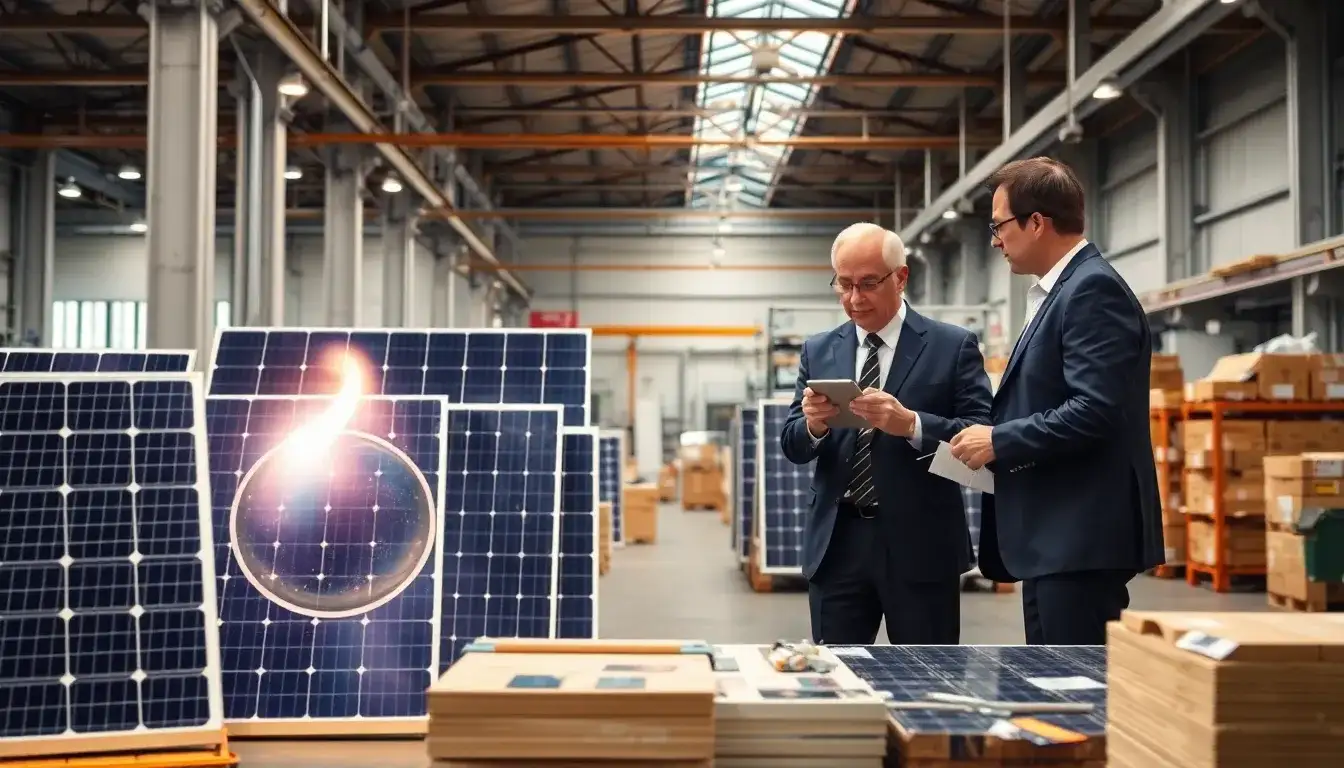
Counterfeit Alert in the Solar Industry! Two major solar module manufacturers have issued “anti-counterfeiting” statements amidst a surge in demand for installations, leading to the emergence of unauthorized “fake” products.
On March 18, Trina Solar (688599.SH) and Aiko Solar (600732.SH) each released statements via their official WeChat accounts, urging customers to recognize authorized channels and avoid purchases from unauthorized sellers. Trina Solar reported that some merchants have been selling solar modules under the company’s brand without authorization through unofficial channels. Similarly, Aiko Solar warned customers about the risks associated with purchasing products from non-official channels and encouraged reporting any suspected counterfeit or infringing products through official means.
Why did these leading manufacturers issue such “anti-counterfeiting” statements? Industry insiders suggest that this may be related to disputes involving manufacturers, subcontractors, and distributors. Currently, the prices of solar modules are on the rise, and popular products from mainstream brands are in short supply, prompting various stakeholders in the industry to compete for a larger share of the market.
Counterfeit Products Threaten Market Stability
Trina Solar stated that the sale of suspected company products through unofficial channels severely disrupts market order, harms the legitimate rights of authorized distributors and consumers, and poses significant risks regarding product quality, after-sales service, and user rights. Aiko Solar highlighted multiple risks of purchasing from non-official channels, including lack of product quality assurance, absence of after-sales service, difficulty in exercising rights, unusual pricing risks, and infringement risks.
They also noted that products from unauthorized channels (such as personal purchases, non-certified e-commerce stores, and second-hand platforms) have unclear sources and may contain counterfeit, substandard, refurbished, or modified components, thus failing to guarantee the quality and standard after-sales service of their genuine products.
There are rumors that the “unauthorized products” mentioned in the statements may originate from subcontractors. However, representatives from Aiko Solar stated that their ABC module products do not involve any subcontractors. The aim of their statement is to remind customers to protect their rights amid the current market chaos. Trina Solar did not specifically respond to questions regarding subcontracting but indicated that the primary purpose of the statement was to regulate the channel market.
Amidst a recent surge in demand for installations, the sales of modules have become tight, resulting in market disorder. This trend is expected to continue until the end of the policy window, after which the market may stabilize.
In fact, subcontracting is a common practice in the industry. A representative from a leading module company mentioned that if a brand’s manufacturing capacity is limited or if quicker delivery is required, it may transfer some orders to other companies for production. “It’s akin to renting someone else’s production capacity, where the subcontractor earns processing fees, yet the end product is still delivered under the brand’s name.”
Additionally, prior to the Spring Festival, manufacturers kept inventories low to avoid losses from price drops due to a continued decline in industry chain prices. Since late February, demand in the distributed market has surged sharply, leading to short-term supply shortages and increased subcontracting needs.
For instance, a certain solar enterprise that claims to only provide subcontracting services has proposed a “shared capacity” concept, advocating for a flexible industry chain where the manufacturer lacks its own brand and instead offers OEM and ODM services for other brands, delivering the final product under the client’s brand. This model is also quite common among leading companies, with both parties negotiating processing fees based on market conditions.
In the OEM model, the client leads product design and technical standards, while the subcontractor is responsible for production based on demand, ensuring product quality and delivery efficiency. In the ODM model, the subcontractor handles the entire process. “Subcontractor products should not be considered ‘fake goods,’ but for unauthorized products, the client typically assumes that they have not undergone quality inspection and will not provide after-sales support or warranties for non-certified products,” explained a component industry representative.
Policy Changes Trigger Demand Surge
“Just a month ago, it was hard to imagine a shortage of modules.” Many professionals in the solar industry have expressed surprise at the recent demand surge for installations. According to the China Photovoltaic Industry Association, by the end of 2023, global module production capacity had already exceeded 1000 GW, with China accounting for over 80% of global production capacity and output.
Regarding module prices, after a previous spike caused by polysilicon shortages, prices have dropped due to temporary supply-demand imbalances, with per watt prices falling from a high of 1.8 yuan to near the “survival line” of 0.6 yuan. Analysts have noted that supply-demand changes have caused price fluctuations, but since modules are at the downstream end of manufacturing, they have less negotiating power compared to upstream (wafer and cell production) and downstream (customer projects).
This February, the National Development and Reform Commission and the National Energy Administration released documents aimed at deepening market reforms for renewable energy pricing, which unexpectedly positioned module manufacturers in a favorable light. The documents stipulate that from June 1, the electricity scale for newly commissioned projects will be dynamically adjusted according to the performance of local renewable energy development targets, with pricing determined through market bidding.
Recent reports from Infolink indicate a slight increase in orders, particularly in the distributed sector, with commercial projects seeing the most significant impact, reflecting that the new policy has indeed spurred a surge in the distributed market. With less than three months remaining before the transition between old and new policies, module distributors and EPC investors have stated that their entire focus is on capitalizing on the policy benefits associated with existing projects, with the distributed market entering a “100-day sprint.”
Analysts have commented that under the “low inventory – high volatility” cycle characteristic, solar companies still need to enhance their ability to respond to demand changes. However, from the perspective of protecting customer rights, other brand manufacturers may also caution customers to purchase solar products through authorized channels.







